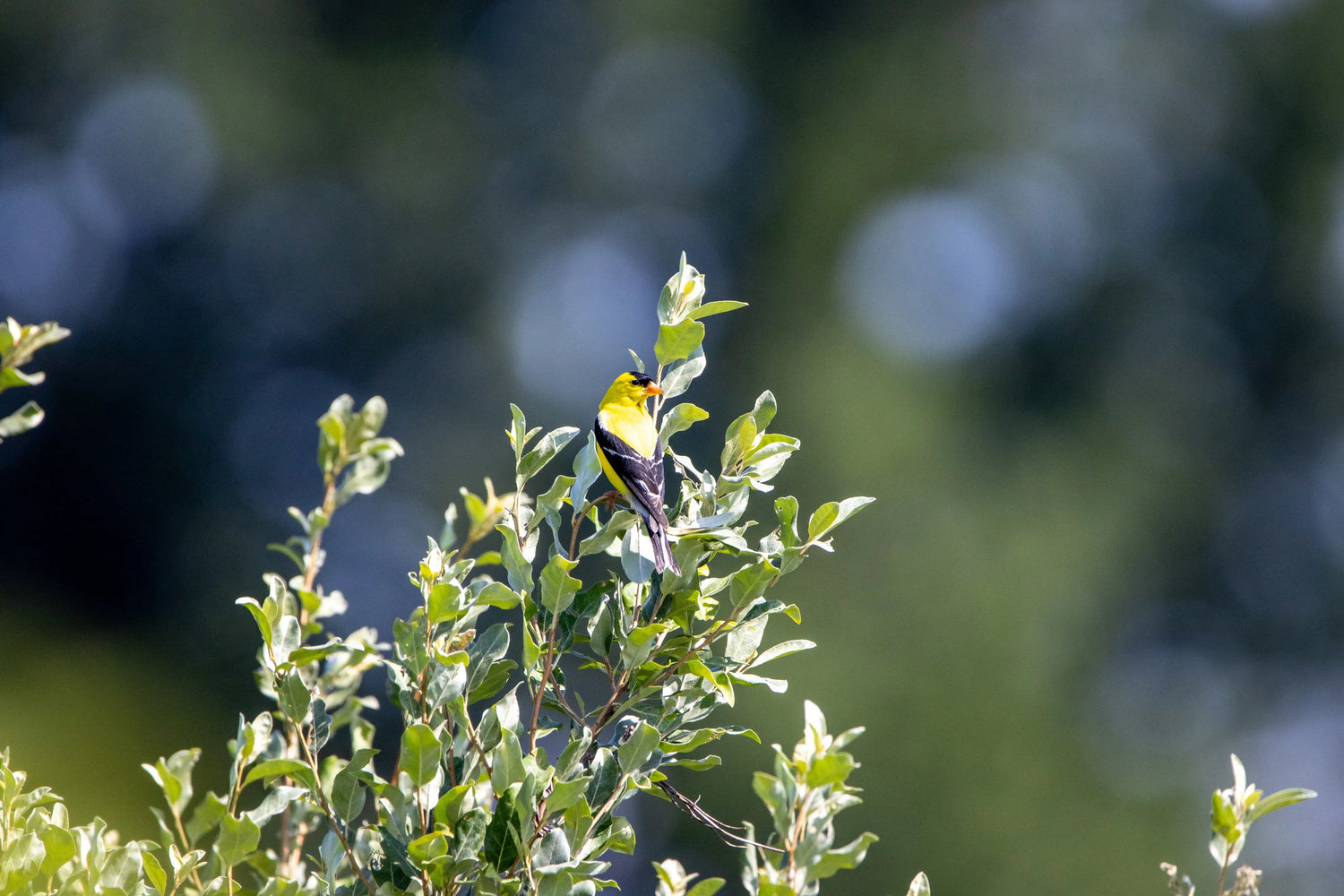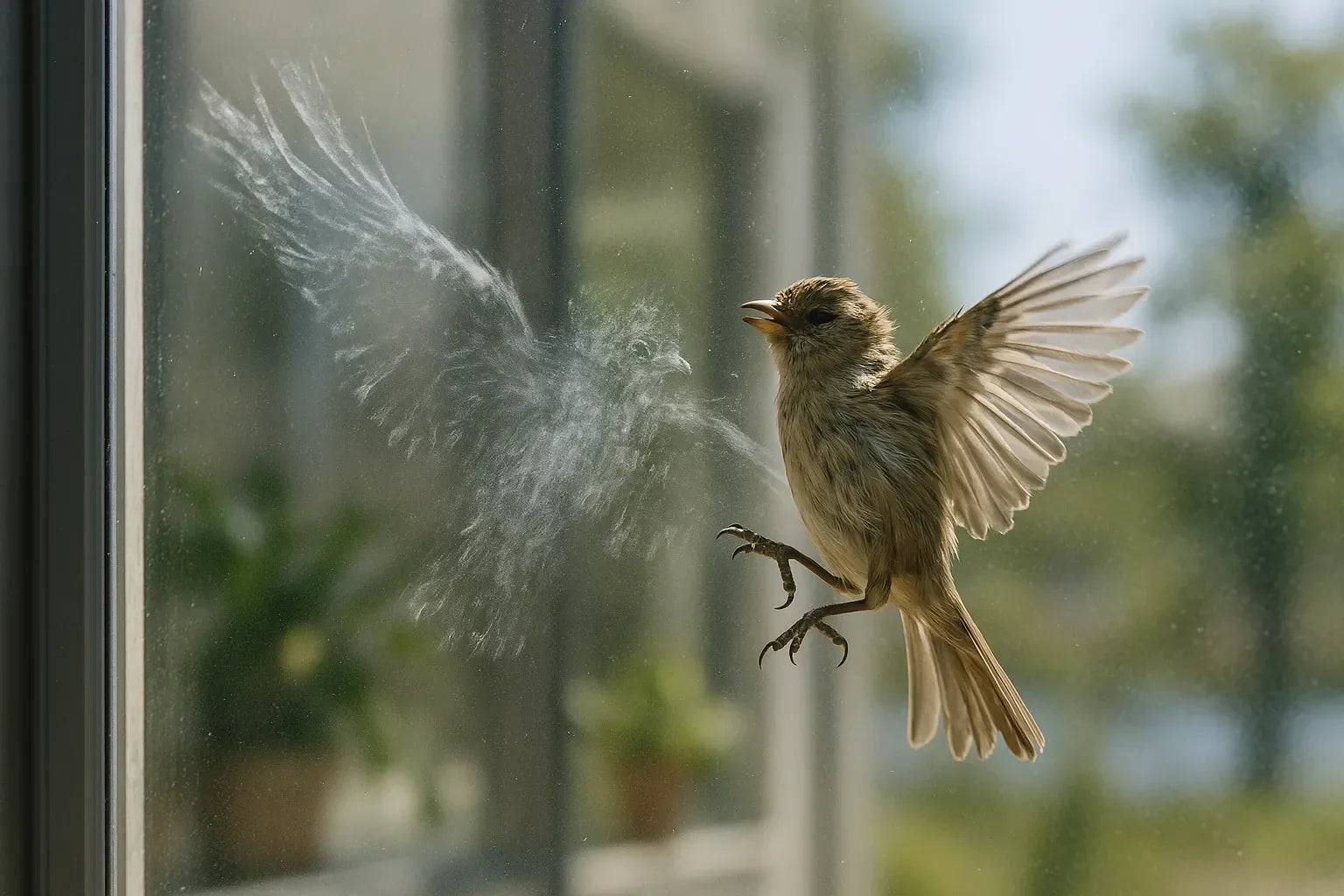Ever stood in your garden, surrounded by birdsong—but no birds in sight? You're not alone. This is a common—and slightly magical—experience for bird lovers. Birds often sing loud and clear, yet stay completely invisible to us. Why?
In this guide, we’ll explore the science and behavior behind this phenomenon, and share smart tips to help you turn that cheerful chirping into an actual bird sighting.
👂 Sound Travels Differently Than Sight
Your Ears Hear Birds, but Your Eyes Can’t Find Them

Birdsong is evolutionarily designed to travel. Even a tiny bird can produce a call that cuts across trees, fences, and even buildings.
- Birds often perch high in trees, on rooftops, or within dense foliage—places we rarely think to scan.
- Sound can reflect off surfaces like walls or tree trunks, distorting its origin.
- High-pitched calls are especially tricky for human ears to locate precisely.
🔎 Quick Tip: Try closing your eyes to focus on the direction of the sound, then slowly open them and scan in that area. You'll often spot the source perched quietly.
🍃 Birds Are Masters of Camouflage
They're Not Gone—They’re Just Really Good at Hiding
Many backyard birds are built to blend in. Their feathers match bark, leaves, and even the shadows.
- Wrens, sparrows, and warblers often nest or sing from within shrubs or under eaves.
- Even brightly colored birds like cardinals or bluebirds can vanish against filtered light or leafy cover.
- When singing, birds tend to remain motionless—making them even harder to detect.
🎨 Fun Fact: Some birds sing from the interior of bushes instead of open branches—maximizing protection while staying vocal.
🌅 Timing Is Everything: When Birds Sing
You Might Be Looking at the Wrong Time
Birds are most vocal during the early morning and late evening—the dawn chorus and dusk calls.
- These times often have poor or uneven lighting, reducing visibility.
- Looking toward sunrise or sunset can create strong backlighting, turning birds into hard-to-see silhouettes.
- Overcast or foggy days further lower your chances of spotting them visually.
🕒 Pro Tip: Try birdwatching between 8–10 a.m.—when there's still vocal activity but lighting is much better for spotting movement and colors.
♀️ How to Actually Spot Hidden Birds
From Ears to Eyes: Turning Chirps into Sightings
Just hearing a bird is only half the fun—here’s how to find the feathery singer:
- Scan methodically: Look from low to high, left to right. Check fence tops, branches, and wires.
- Stay still: Birds often stop singing if they sense movement. A few seconds of patience can make all the difference.
- Watch for rustling: Birds may be hopping or foraging quietly even while they sing.
- Use tech tools: Binoculars and smart bird feeder cameras can do what your eyes might miss.
📸 Smart Tip: Devices like the Bilantan Smart Bird Feeder Camera can capture video and audio when birds land to eat. Even shy or well-camouflaged birds become visible once they come in for a snack!
🌳 Why Some Birds Are Easier to Hear Than See?
It’s Not You—Some Birds Are Just Naturally Sneaky
Bird species vary in how much they rely on sound vs. visual display.
- Wood thrushes, veeries, and hermit thrushes sing deep in the woods but rarely leave cover.
- Eastern towhees scratch in leaf litter but sing boldly from shrubs.
- Some birds, like the brown creeper, blend into tree bark so well they’re almost invisible—even when right in front of you.
🎶 These birds evolved to communicate without exposing themselves, especially during mating season when singing increases but predators are near.
🧠 Why Are Bird Calls So Distinct?
The Audio Design of Nature’s Alarm Clocks
You might wonder why bird sounds are often so crisp and piercing. It’s not a coincidence—it’s sound engineering, nature-style.
- High-pitched calls travel better through foliage and background noise.
- Repetitive patterns help mates and rivals identify individuals from afar.
- Some birds (like mockingbirds or starlings) mimic others, adding layers of confusion!
🎧 For humans, these clear, repetitive sounds stand out—but our eyes still lag behind.
📸 Bonus Tip: Make the Invisible, Visible
Let Technology Help You Out
You don’t have to be an expert tracker to enjoy great birdwatching. Here are 3 easy ways to get started:
- Set up a bird-friendly zone: Use feeders, water, and native plants to attract birds.
- Install a smart feeder camera: Capture footage without needing to stand and wait.
- Review your footage: You’ll be surprised how many birds visited while you weren’t looking!
❓ Frequently Asked Questions (FAQ)
Q: Why can I hear birds so clearly but never see them?
A: Birds often sing from concealed spots like tree canopies, rooftops, or deep bushes. Their feathers help them blend in, and they tend to remain still while singing.
Q: Do all birds sing from hidden places?
A: Many do, especially smaller species that need protection from predators. However, some birds, like robins or mockingbirds, sing from exposed perches to attract mates.
Q: What tools can help me find birds I hear?
A: Binoculars, bird ID apps, and smart feeder cameras are very helpful. Smart feeders like Bilantan’s even alert you when birds visit.
Q: What time of day is best for spotting birds?
A: Morning hours (8–10 a.m.) offer the best balance of light and bird activity for both hearing and seeing birds.
🧭 Final Thoughts: Don’t Just Hear—Look Deeper
Next time you hear a bird singing, pause. Listen. Scan carefully. The singer is almost always nearby—just hidden from plain sight. Whether you’re using your own senses or letting smart technology lend a hand, the joy of finally seeing what you’ve been hearing is well worth the effort.
🐤 Want to bring those mystery birds into focus?
Explore Bilantan’s Smart Bird Feeder Camera →




Leave a comment
All comments are moderated before being published.
This site is protected by hCaptcha and the hCaptcha Privacy Policy and Terms of Service apply.